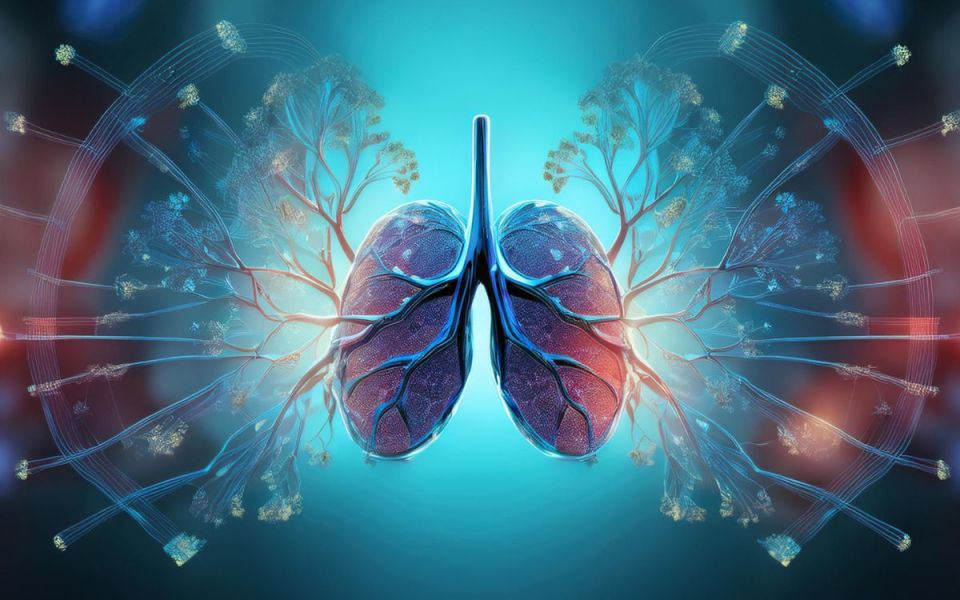Asthma: From Trigger to Treatment

On July 12, 1801, the Spanish and French fleets off Gibraltar were on high alert after encountering the British. That night, the British third-rate ship HMS Superb quietly approached the 112-gun Spanish ship Real Carlos, fired her cannons, and set her ablaze. In confusion, the Spaniards fired on their nearby ally, the San Hermenegildo, resulting in a fierce battle between the two Spanish ships that ended with both vessels exploding. The moral of the story is that when you're overly anxious or on high alert, you may end up targeting the wrong source. This can be particularly bad when talking about your immune system. The immune system fights bacteria, kills viruses, removes precancerous cells, gets rid of toxins, and sometimes accidentally causes asthma and other diseases. Whoopsie. Asthma is caused by a wayward immune system that produces chronic inflammation and hyperactivity of the airways. Let’s break that down: chronic means long-lasting, hyperactivity indicates excessive muscle activity or spasm, the airway includes the throat and lungs, and inflammation is the body’s immune response, which includes swelling, irritation, and a bunch of white blood cells. Chronic inflammation can narrow your airway, making it more difficult to breathe. Excessive mucus and changes to the airway structure may also occur. Asthma, much like naval warfare. is characterized by longer periods without activity or symptoms and brief, intense, asthma attacks. Wheezing, coughing, chest tightness, and shortness of breath are typical symptoms during an asthma attack. These symptoms can range from mild to life-threatening.
Asthma is a widespread disease, affecting nearly 300 million people worldwide. Causes of asthma vary between people, but risks include family history, poverty, respiratory viral infections, allergies, obesity, and exposure to air pollution and irritants (including smoking and occupational hazards). These risks increase the chances of the immune system causing excessive airway inflammation, typical of asthma. Once the airways are inflamed, a “trigger” can fire the over-primed immune system into action. These triggers may include airborne particles (like dust, perfume, cannon fire smoke, and allergens), some medicines, illnesses (like the flu), exercise, or sleep.
What’s going on inside the body during asthma? Let’s look closer. The immune system is divided into two parts, the innate and adaptive immune systems. The innate immune system is the body’s first line of defense and includes skin, mucus, stomach acid, proteins, enzymes, some immune cells, and more. The innate immune system is active from birth and doesn’t have the ability to remember or adapt to be more efficient at targeting threats. The adaptive immune system, in contrast, learns to combat specific things. When it combats the wrong things or combats them in the wrong way we get immune diseases like asthma. With asthma, the adaptive immune system identifies pollutants or other triggers as dangerous, then sounds the alarm using signaling proteins called cytokines (including a class called, appropriately, alarmins). The word cytokine is Greek, composed of cyto- meaning “cell” and -kine which means “movement.” Cytokines kick the immune cells in gear and get them moving. With asthma, these cytokines mistakenly send way too many white blood cells to the airway in response. The white blood cells in question may be eosinophils or neutrophils. However, according to Dr. Joshi on our MedEvidence Podcast, “eosinophilic asthma makes up the majority of severe asthmatics, almost up to 90 percent of them.” The alarmin cytokines that recruit eosinophils include thymic stromal lymphopoietin . This little protein is pivotal in the eosinophilic process and causes a cascade of responses to deliver immune cells to the lungs. Unfortunately, rogue signaling cascades can cause a positive feedback loop and have been traditionally hard to suppress.
There are no cures for asthma. Current treatments attempt to minimize symptoms and reduce attacks and exacerbations with minimal side effects. Dr. Joshi states that “if you put eosinophils in a vat and put a drop of steroids in with them,they would die.” Because of this, inhaled topical corticosteroids are the first line of defense for eosinophilic asthma attacks. Steroids also work for neutrophilic asthma, but medicines that expand the airway (bronchodilators, like a Long-acting B2 Agonist (LABA)) and ones that prevent mucus (like muscarinic antagonists) may need to be added. If more help is needed, oral steroids might be used. These are systemic and have more side effects. More side effects are obviously not ideal, so new research has been targeting the rogue immune system instead. Antileukotriene agents like montelukast are useful in some immune diseases but less so in asthma. Research into calming down the cytokine alarmins is getting into the clinical trial phase, with new targets like thymic stromal lymphopoietin being in the crosshairs. If the Spanish and French fleets in 1801 had access to clinical trials, they might have managed their itchy trigger fingers, much like we aim to calm our overactive immune systems in asthma today.
Staff Writer / Editor Benton Lowey-Ball, BS, BFA
Click Below for ENCORE Research Group's Enrolling Studies
References:
American Lung Association. (2024, June 7). What causes asthma? [Website]. Accessed 3 September 2024. https://www.lung.org/lung-health-diseases/lung-disease-lookup/asthma/learn-about-asthma/what-causes-asthma
Centers for Disease Control and Prevention (CDC). (2023, May 10). Most recent national asthma data. [Website]. Accessed 3 September 2024. https://www.cdc.gov/asthma/most_recent_national_asthma_data.htm
Collaborators, G. B. D. (2018). Global, regional, and national incidence, prevalence, and years lived with disability for 354 diseases and injuries for 195 countries and territories, 1990-2017: a systematic analysis for the Global Burden of Disease Study 2017. https://doi.org/10.1016/S0140-6736(18)32279-7
Ebina-Shibuya, R., & Leonard, W. J. (2023). Role of thymic stromal lymphopoietin in allergy and beyond. Nature Reviews Immunology, 23(1), 24-37. https://www.nature.com/articles/s41577-022-00735-y
Hamid, Q., & Tulic, M. (2009). Immunobiology of asthma. Annual review of physiology, 71(1), 489-507. https://doi.org/10.1146/annurev.physiol.010908.163200
Keats, R.G. (1801, August 3). Superb off Cape Trafalgar, June 13, 1801. The London Gazette. https://www.thegazette.co.uk/London/issue/15392/page/946
Koren, M.J. & Joshi, S. (Hosts). (2023). Two docs talk allergies and asthma. [Podcast Episode]. In MedEvidence! Truth Behind the Data. MedEvidence. https://medevidence.com/two-docs-talk-allergy-and-asthma-part-1
World Health Organization. (2024, May 6). Asthma. [Website]. Accessed 3 September 2024. https://www.who.int/news-room/fact-sheets/detail/asthma
Yang, D., Han, Z., & Oppenheim, J. J. (2017). Alarmins and immunity. Immunological reviews, 280(1), 41-56. https://www.ncbi.nlm.nih.gov/pmc/articles/PMC5699517/
Ying, S., O’Connor, B., Ratoff, J., Meng, Q., Mallett, K., Cousins, D., ... & Corrigan, C. (2005). Thymic stromal lymphopoietin expression is increased in asthmatic airways and correlates with expression of Th2-attracting chemokines and disease severity. The Journal of Immunology, 174(12), 8183-8190.



